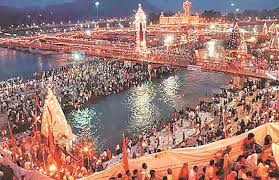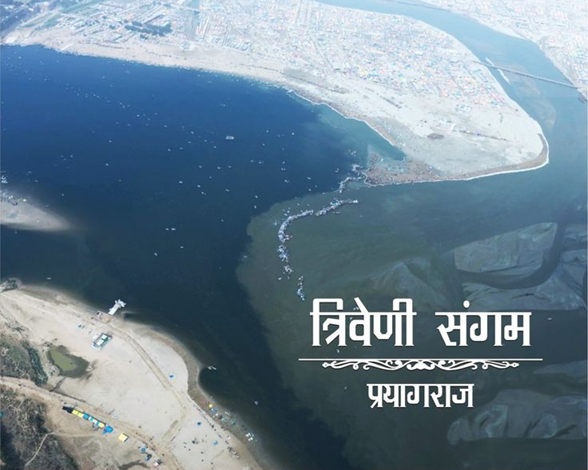The Triveni Sangam in Prayagraj is a sacred and iconic confluence where three rivers—the Ganga, the Yamuna, and the mythical Sarasvati—meet. This confluence holds immense religious and cultural significance in India, especially in Hinduism. It is considered one of the holiest places for pilgrimage, with millions of devotees visiting the Sangam to bathe in its waters, believing it purifies their soul and washes away sins.
Key Aspects of the Triveni Sangam:
- Spiritual Importance:
The Triveni Sangam is considered to be a very powerful and sacred spot. Hindus believe that the waters at this confluence have the ability to cleanse one’s sins and offer spiritual salvation. Bathing at the Sangam is thought to bestow moksha (liberation from the cycle of birth and death), and it is especially important during religious events and festivals. - Kumbh Mela:
One of the most significant events held at the Triveni Sangam is the Kumbh Mela, a grand Hindu festival that occurs every 12 years in Prayagraj. It is the largest religious gathering in the world, attracting millions of pilgrims and devotees who come to take a holy dip in the Sangam waters. This event holds great spiritual importance, and people believe it to be a time when the gods bless them with purification and peace.

- Mythical and Cultural Significance:
The confluence of the Ganga, Yamuna, and Sarasvati holds both historical and mythical significance. Sarasvati, though not physically visible today, is believed to be a sacred river that flows underground, and its confluence with the Ganga and Yamuna is considered a divine meeting. The site is mentioned in several ancient texts, such as the Rigveda, Mahabharata, and Puranas, emphasizing its importance in Indian mythology and religious practices. - Historical Relevance:
The site has been historically important for centuries, with Prayagraj being a center of cultural, intellectual, and religious activities. The area around the Sangam is dotted with numerous temples and ghats (steps leading to the river), each with its own religious significance. - Environmental Challenges:
Like many sacred rivers in India, the Ganga and Yamuna have faced pollution and environmental degradation over time. Various initiatives and government programs have been launched to clean the rivers and protect this vital water source. Efforts are ongoing to preserve the sanctity of the Triveni Sangam area, especially with the increasing number of visitors during events like the Kumbh Mela. - Visiting the Sangam:
Visitors to the Triveni Sangam can take boat rides to the exact point where the three rivers meet. Pilgrims typically perform rituals at the confluence, including offering prayers, performing ceremonies for deceased ancestors, and taking ritual baths. The serene and spiritual atmosphere, combined with the stunning view of the rivers meeting, makes it an awe-inspiring location for both devotees and tourists.

Conclusion:
The Triveni Sangam is not just a geographical meeting point of rivers, but a place where spirituality, culture, history, and mythology come together. It remains one of the holiest spots in India, drawing people from across the world who seek spiritual solace, redemption, and a deep connection with India’s rich heritage. The Sangam continues to be a place where the sacred flows, and millions continue to witness and experience the divine energy of the confluence.



Leave a Reply